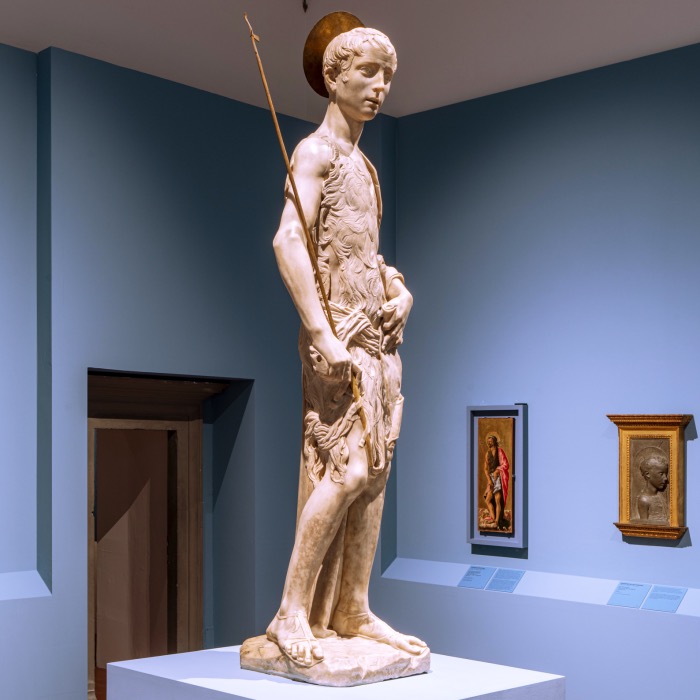
THE WORKS OF DONATELLO, SYMBOL OF THE RENAISSANCE
Donatello’s works made a profound mark on art in the 15th century, becoming a point of reference for entire generations of artists.
His fame as a sculptor and architect spread from Tuscany to the Veneto, from the Marches to Rome and Naples, comparable only to the greats of art history such as Giotto, Raphael, Michelangelo and Bernini.
Donatello’s modern spirit pushed him to continually question himself, creating an unpredictable style that challenged the fashions and tastes of the time: a transgressive artist who, starting from Antiquity and the more distant Middle Ages, arrived at a new way of seeing and understanding the world.
There is an exhibition in Florence that traces the history and art of Donatello and at the bottom of this post you will find all the information you need to visit it. but first I will show you the most important works that you need to know.
The works of Donatello
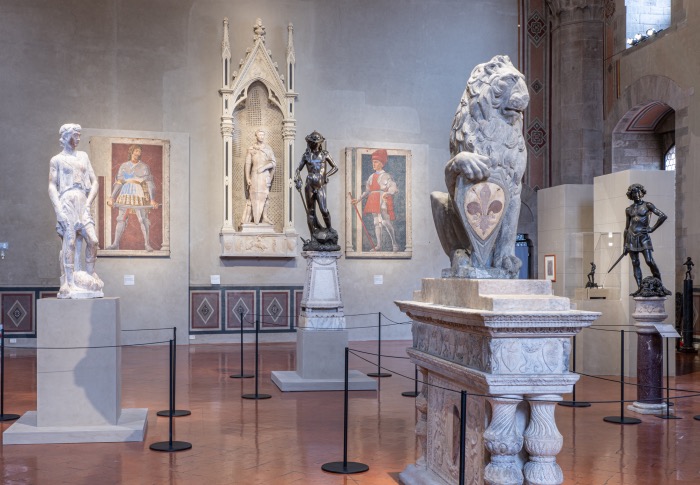
Donatello’s works are characterised by intense pathos and research into the psychology of his subjects.
The artist created compositions capable of combining faithful observation of reality with a profound appropriation of the models of the past, in a succession of conquests and surpasses.
Donatello’s extraordinary ability to use different materials in works that combine preciousness, lyricism and humanity make him one of the most important artists of the Renaissance.
Donatello used marble, stone, bronze, terracotta, wood, stucco, embossed copper, papier-mâché, glass paste and ceramics, always achieving extraordinary expressive effects.
A distinctive feature of his way of proceeding is the so-called ‘schiacciato’ or ‘stiacciato’, i.e. a relief with minimal variations in relation to the background, to suggest an illusion of perspective depth through numerous and very subtle degrees of thickness.
THE WORKS OF DONATELLO
Donatello, Victorious David (1408-1409) Florence, Museo Nazionale del Bargello.
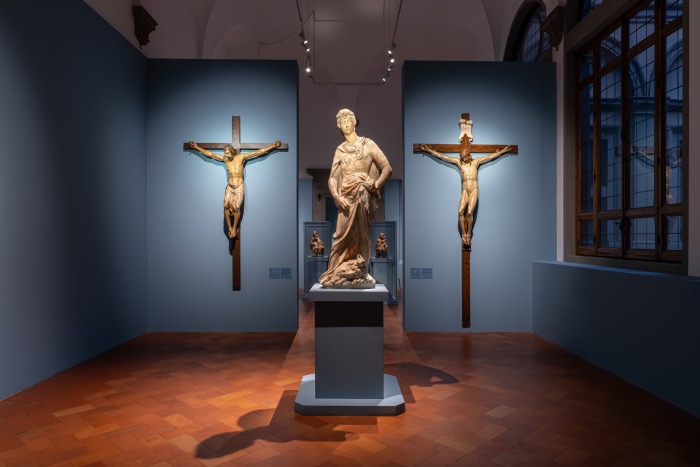
Donatello, David vittorioso
There are two elements in Donatello’s training and debut: on the one hand, there is goldsmithing, which led him to be Lorenzo Ghiberti’s pupil and his collaborator in the early years of his work on the North Door of the Florentine Baptistery (1404-1407); on the other, there is marble carving, for which the immense construction of the Cathedral, then underway for more than a century, provided a talented young man with many opportunities to learn and establish himself.
Donatello obtained his first independent commission in 1406 at the latest, on the site of the Porta della Mandorla in Santa Maria del Fiore. And already in 1408 he was ready for the challenge of his first marble David.
Donatello, Reliquary of San Rossore (1422-1425 circa) Pisa, Museo Nazionale di San Matteo.
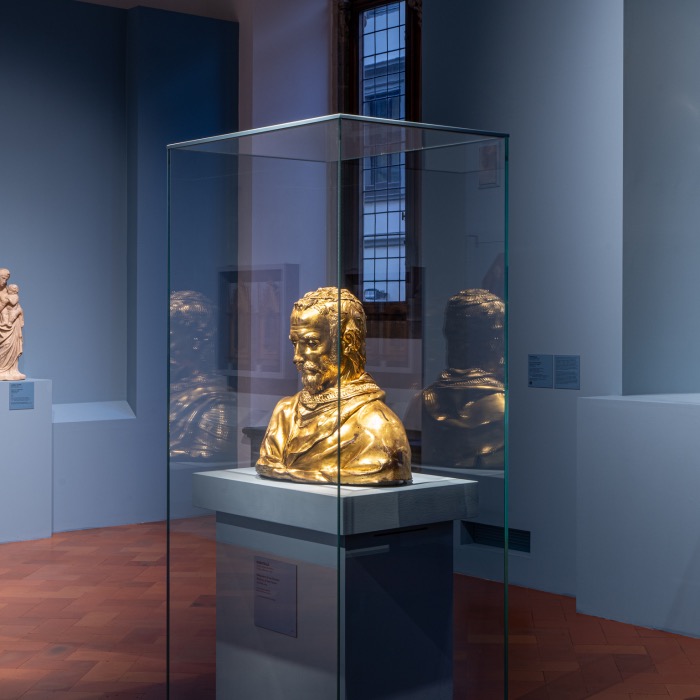
Donatello, Reliquiario di san Rossore
Although he came from a very high school of goldsmithing, Donatello was never a technically irreproachable metalworker.
His power lies in having turned his defects into virtues, inventing a rapid, synthetic metallurgy, concentrated on a few particularly well-chosen visual passages.
The San Rossore bust-reliquary, an indelible portrait of a heroic ancient soldier, is an example of Donatello’s youthful sculptures, in which the artist worked on works of small format but which already aspired to monumentality.
Spirits
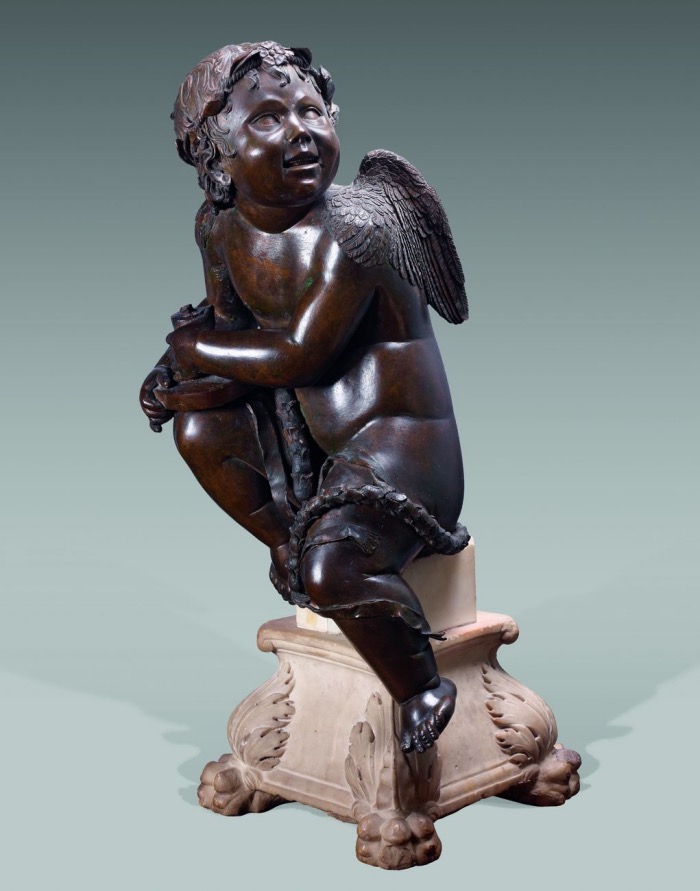
Donatello, Spiritello ceroforo, 1436 ca. Parigi, Musée Jacquemart André
It was certainly not Donatello who invented the ‘spiritelli’, or naked, winged putti. Donatello placed them at the centre of his imagination by inserting them almost everywhere in his works.
For the crowning of the Baptismal Font in Siena, Donatello created three standing and festive “spiritelli”, poised on shells resting on little plant crowns (1429): almost a scale test for the bronze David ten years later.
Apostles’ Gate knockers
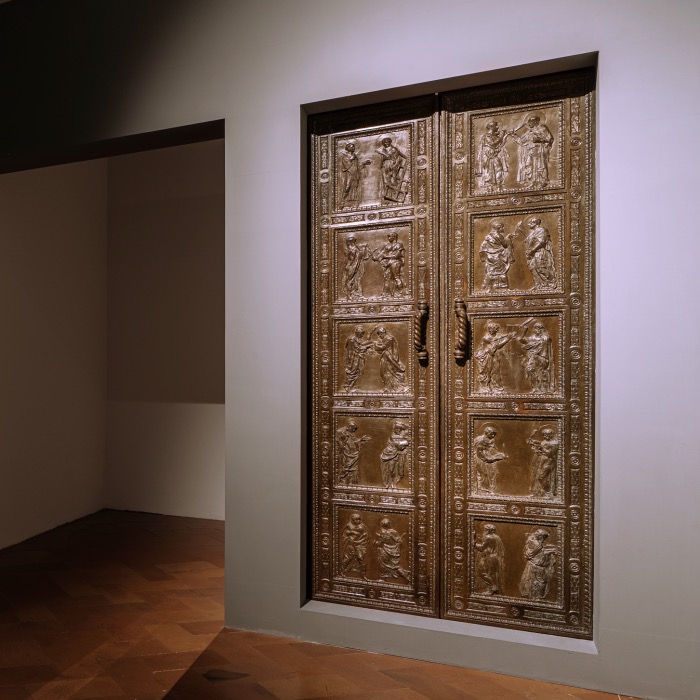
Donatello, Battenti della Porta degli Apostoli
The Door of the Apostles is one of the two bronze doors of the Old Sacristy in the Basilica of San Lorenzo in Florence and they are, among Donatello’s works, the most extraordinary.
Since ancient times, bronze doors have been a luxury and a privilege of a few places and a few patrons, almost always invested with sovereign power or a very high public function.
The Old Sacristy was the private funeral chapel of the Medici family, built by Filippo Brunelleschi and decorated by Donatello, who created a series of enormous stuccoes and the two bronze doors, the only ones of his long career.
The doors are decorated with 10 square fomels interspersed with a frame of festoons, rosettes and palmette friezes. The handles are made like two intertwined ropes.
St John the Baptist
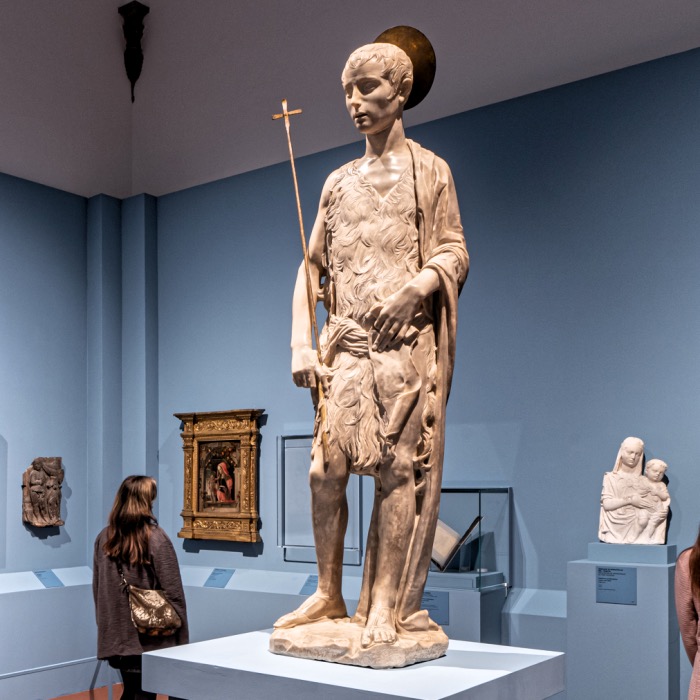
Donatello, San Giovanni Battista di casa Martelli
Towards the end of 1443 Donatello left Florence for Padua.
He was perhaps planning a short trip, like others he had made in the past to Rome, Pisa or Lucca: he was leaving too many tasks unfinished, especially for Santa Maria del Fiore. But he ended up staying in Padua for eleven years. One
of the last works he delivered in his homeland before leaving was the adolescent Saint John the Baptist for the Martelli family, allies of the Medici: it was his last marble statue in the strict sense of the word.
The master took a drawing or model of this statue with him to Padua.
Saint Anthony and Gattamelata
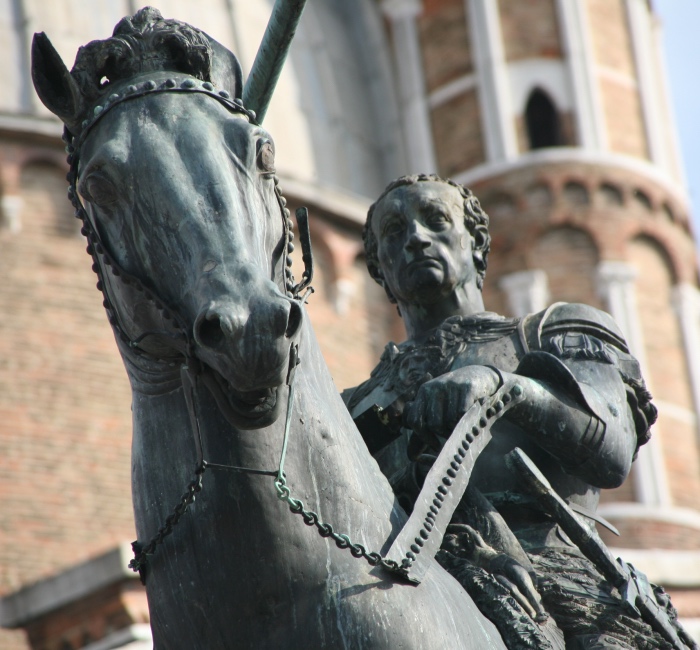
Donatello, Monumento equestre al Gattamelata, Padova.
The Saint’s Altar inflamed artists from the Veneto and beyond.
The four famous Miracles of Saint Anthony for the altar provided the younger generations with inexhaustible inspiration to tackle the same subject, varying it through countless secondary episodes, or focusing on monumental theatricality.
The altar, in its original composition, no longer exists. It was dismantled1591 for the rearrangement of the presbytery and reassembled in 1895.
In the meantime, Donatello was working on the Gattamelata in the square in front of the basilica: the first equestrian monument of ancient forms, completely isolated, after many centuries.
David by Donatello (1440) Bargello Museum
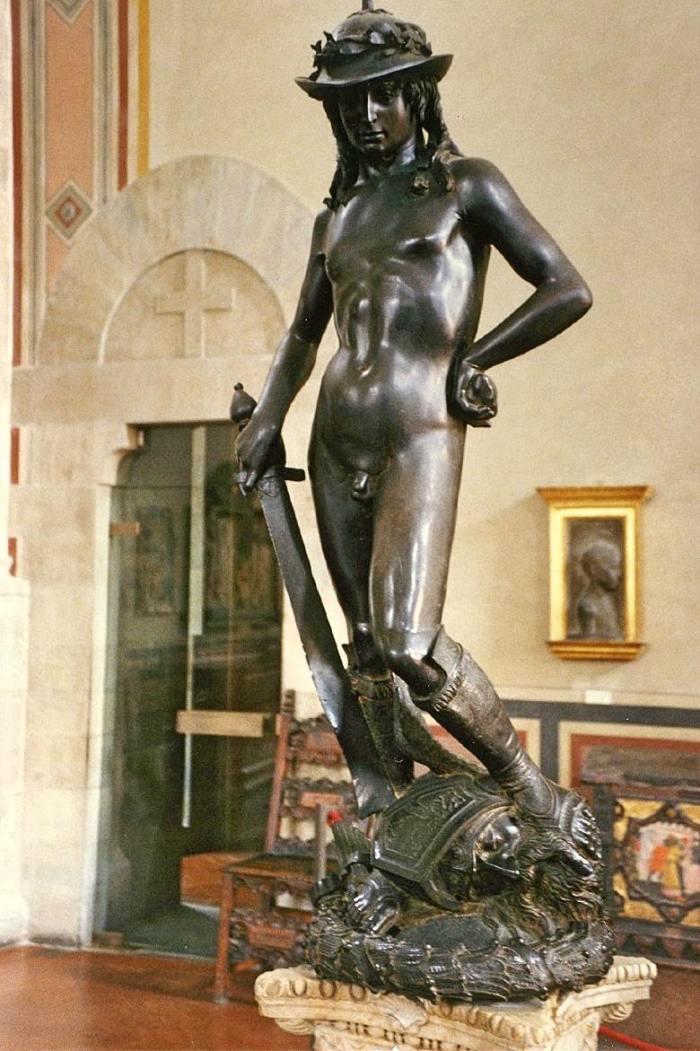
The last years of Donatello’s life were entirely dedicated to the Medici.
Donatello’s David was made in 1440 at the behest of Cosimo I de’Medici to celebrate the battle of Anghiari, which saw Florence win over Milan.
The work has, therefore, a political significance and for this reason the biblical hero David was chosen as the subject, who won against the giant Goliath by striking him with a stone.
DONATELLO’S WORKS EXHIBITION IN FLORENCE
From 19 March 2022 the Fondazione Palazzo Strozzi and the Musei del Bargello will present Donatello, the Renaissance, a historic and unrepeatable exhibition that aims to reconstruct the exceptional career of one of the most important and influential masters of Italian art of all time, comparing it with masterpieces by artists who were his contemporaries, such as Brunelleschi and Masaccio, Mantegna and Giovanni Bellini, as well as later ones like Raphael and Michelangelo.
Donatello, the Renaissance
19 March – 31 July 2022Palazzo
Strozzi and Museo Nazionale del Bargello, Florence
Spread over two venues, Palazzo Strozzi and the Museo Nazionale del Bargello, the exhibition offers a journey through the life and fortunes of Donatello divided into fourteen sections.
At Palazzo Strozzi, the exhibition unfolds in a chronological-thematic itinerary that reconstructs Donatello’s artistic biography through one hundred masterpieces.
At the Museo Nazionale del Bargello, the exhibition includes iconic works by Donatello.

